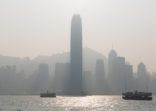Rex Lo, BEA Union Investment
Lo told FSA that the decline in sales may be due to the appreciation in China’s currency in the second half of the year. “When the currency gets stronger, the investors’ need for US dollar-denominated products would be smaller,” he said. “But it is expected that the interest of investors in China in global allocation products will pick up again because of their low penetration.”
The China-Hong Kong Mutual Recognition of Funds (MRF) scheme, launched in 2016, allows cross-border trading of registered funds between the mainland and the SAR.
In 2017, net new assets of northbound funds sold under MRF were down 39.7% from a year before, according to data from the State Administration of Foreign Exchange (SAFE).
Unlike the cross-border programme that links Hong Kong and Switzerland, which caters mostly to high-net worth individuals, most of the participants in the China-Hong Kong scheme are retail investors. “Many retail investors who purchase funds online, take a speculative approach,” Lo said. “They care about the price movement, rather than the investment strategy or the holdings of the fund.” He added that education for investors and fund distributors on investment literacy is necessary.
Data from SAFE shows that the northbound funds, which are domiciled in Hong Kong and available for sale on the mainland, remain more attractive than the southbound ones. The total net sales of the nine northbound funds accounted for RMB 12.46bn ($1.97bn). Throughout two years of trading, the net northbound flows were roughly 50 times higher than those into the southbound funds.
However, the difference between the northbound and southbound sales has narrowed in 2017. Comparing with the figures of 2016, the net inflows into northbound funds was down by 40% while those into southbound funds doubled, shrinking the difference in net inflow down to 40 times.

Source: SAFE
In December, northbound funds recorded a net outflow of RMB 410.49m, almost matching the December 2016 record of RMB 410.8m. In terms of gross sales, the Hong Kong-domiciled funds plunged 207% from last month.
Southbound (China-domiciled) funds also saw an outflow of RMB9.9m or a 261.6% decrease. Southbound sales tend to be more volatile on a monthly basis.

Source: SAFE
So far, nine funds have been approved for sale on the mainland (Hong Kong domiciled or “northbound”) and 24 funds for sale in Hong Kong (mainland domiciled or “southbound”).
Earlier this month, BEA Union Investment’s Asian Bond and Currency (ABC) Fund was the latest product to gain approval to be sold on the mainland under the MRF scheme.
The list of MRF-approved northbound funds
| Zeal Voyage China Fund |
| JPMorgan Asian Total Return Bond fund |
| Hang Seng China H-Share Index Fund |
| JPMorgan Pacific Securities Fund |
| BOCHK All Weather China High Yield Bond Fund |
| Schroders Asian Asset Income Fund |
| Amundi HK New Generation Asia Pacific Equity Dividend Fund |
| BOCI-Prudential BOCHK Global Equity Fund |
| BEA Union Investment Asian Bond and Currency Fund |
Source: FSA
However, northbound fund approvals have slowed. Although the approval can be completed within six months, ten applications submitted as early as in July 2015 are still under review process, including the funds managed by Haitong Asset Management, Amundi Asset Management and Hong Kong-based Value Partners, according to the China Securities Regulatory Commission.
Lo is positive on the approval process of the firm’s pending application of a multi-asset fund. He hopes to see the approval by the end of the first quarter.
The most recent application was submitted by JPMorgan Funds (Asia) for its JPMorgan Global Bond (MRF) Fund. The firm’s other pending fund is the JPMorgan Asia Equity Dividend Fund, with an application dated May 2016. The firm has two other funds that have already been approved by China’s regulator.

















